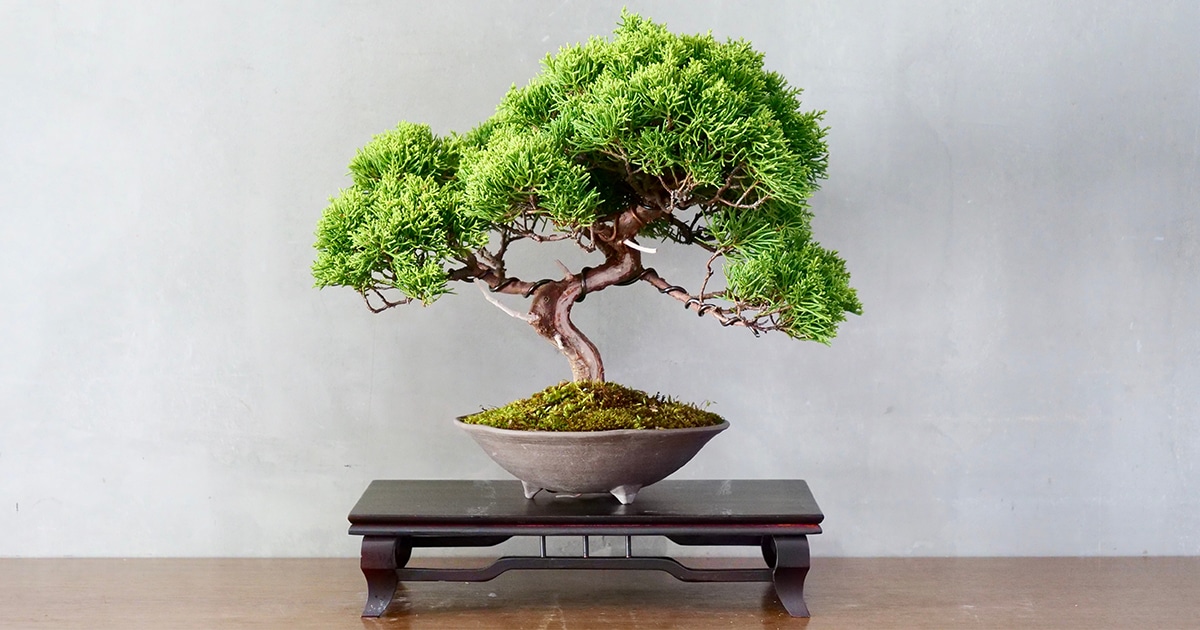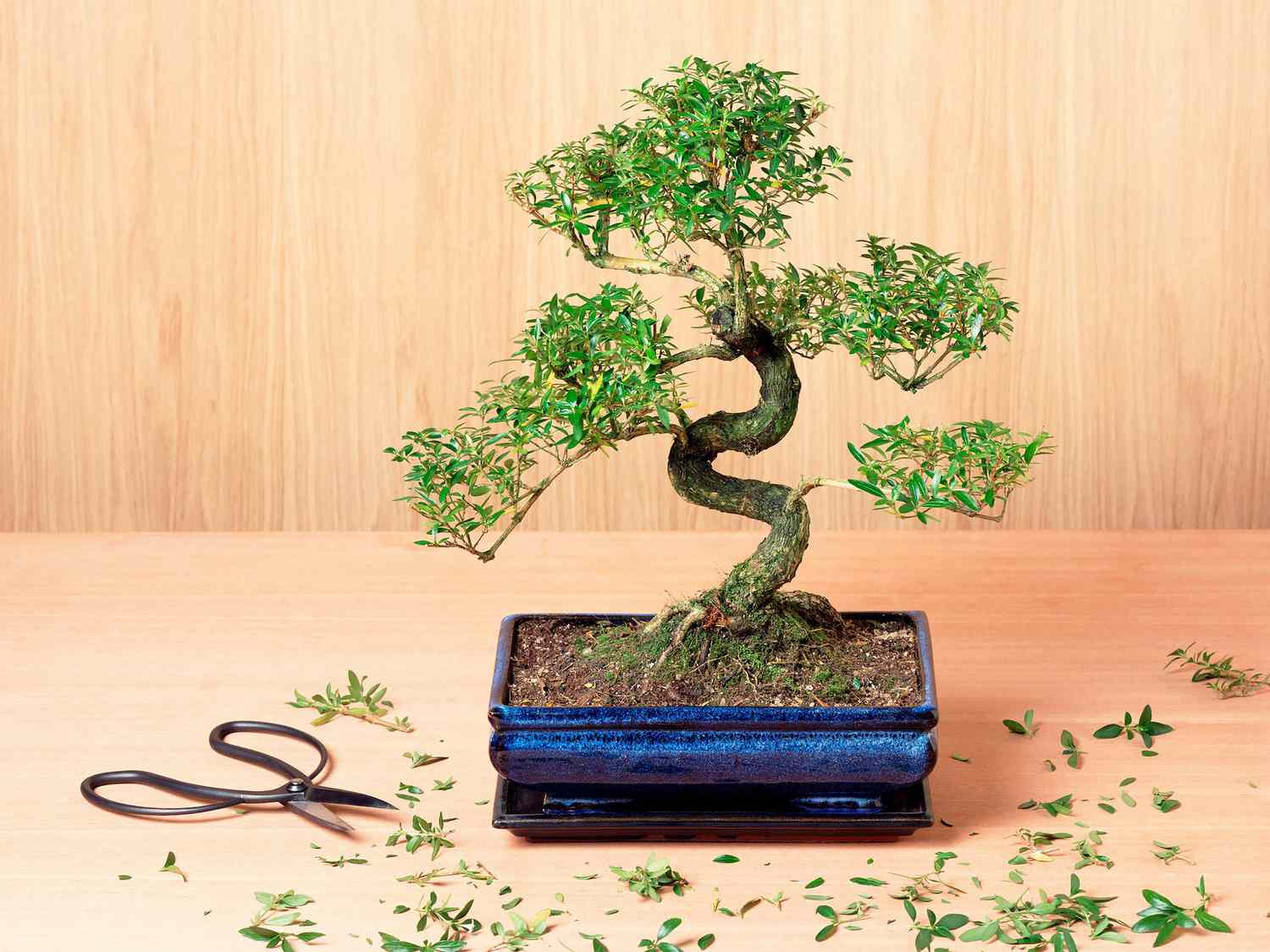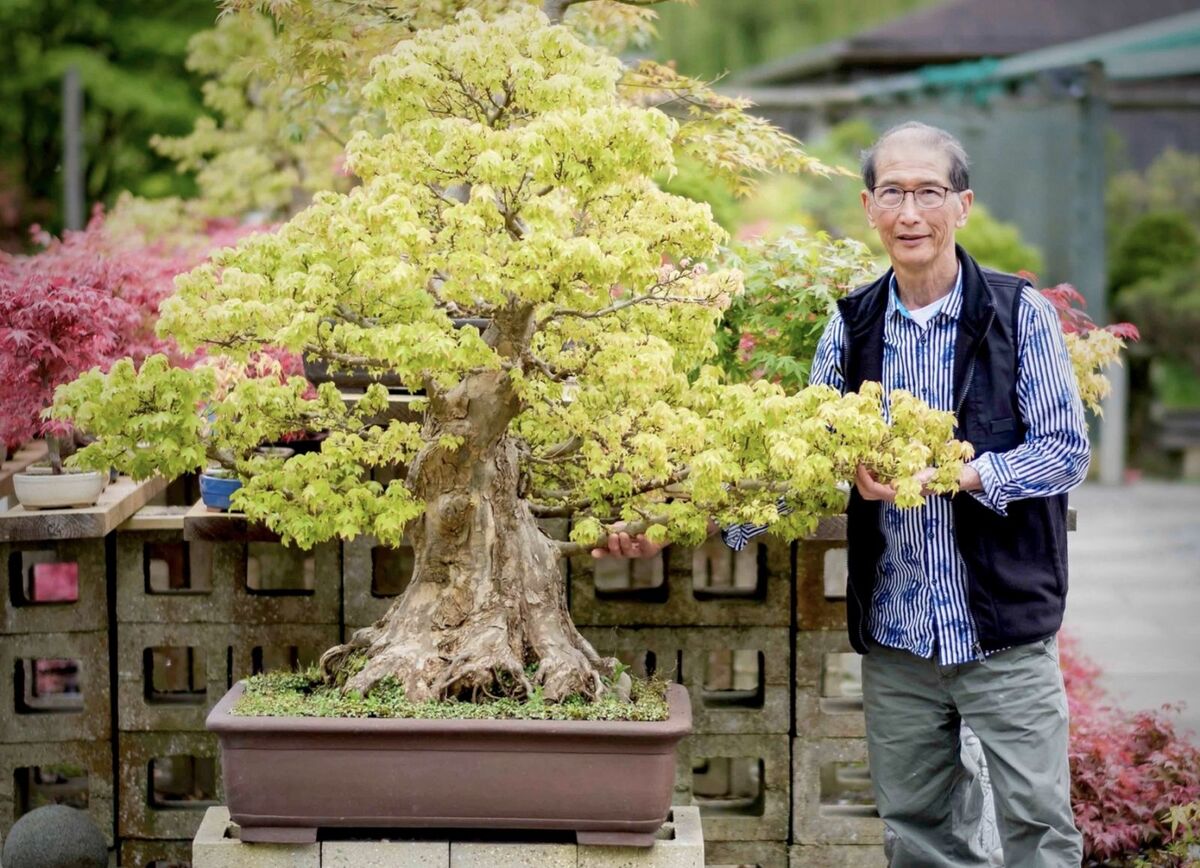Home>Gardening Techniques>Plant Care>What Do Bonsai Trees Represent


Plant Care
What Do Bonsai Trees Represent
Modified: January 22, 2024
Discover the symbolism behind bonsai trees and learn the secrets of plant care. Unlock the beauty and tranquility of these miniature masterpieces.
(Many of the links in this article redirect to a specific reviewed product. Your purchase of these products through affiliate links helps to generate commission for Chicagolandgardening.com, at no extra cost. Learn more)
Table of Contents
Introduction
Bonsai trees have long captured the imagination and admiration of people around the world. These miniature trees, delicately pruned and sculpted to create artistic masterpieces, carry a charm that is hard to resist. Whether displayed in homes, gardens, or public exhibits, bonsai trees exude a sense of tranquility and beauty.
Originating from China centuries ago, the art of cultivating bonsai has since spread to various countries, including Japan, Korea, and Vietnam. Bonsai refers to the careful cultivation and training of trees in shallow containers, shaping them to resemble full-sized trees in nature. It is both a horticultural practice and an artistic expression, requiring a deep understanding of plant care and aesthetics.
While the literal meaning of “bonsai” is “planted in a container,” these miniature masterpieces represent much more than just beautiful plants. They embody the philosophy of balance, harmony, and respect for nature. Each bonsai tree tells a story, whispering the stillness of mountains, the windswept cliffs, and the peacefulness of ancient forests.
In this article, we will explore the intriguing world of bonsai trees, delving into their history, artistic expression, symbolism, and the values they represent. We will also discuss the significance of bonsai trees as a reflection of balance and harmony and how they can serve as a meditation tool. Lastly, we will touch upon the maintenance and care required to ensure the longevity and vitality of these living works of art.
History of Bonsai Trees
The art of cultivating bonsai trees can be traced back to ancient China, where it began during the Han Dynasty (206 BCE – 220 CE). Initially, these small trees were considered luxurious items and were reserved for the nobility and the wealthy. They were commonly found in palace gardens and used to create miniature landscapes that represented the grandeur of the natural world.
Over time, the practice of growing bonsai trees spread to Japan, where it evolved and gained significant cultural significance. Japanese monks, influenced by Zen Buddhism, played a crucial role in shaping the art form and incorporating spiritual elements into the cultivation of bonsai trees. In Japan, bonsai became more accessible to the general population and became a beloved hobby.
During the Edo period (1603–1868), bonsai trees started to gain popularity among the samurai class and wealthy merchants. It was during this time that the term “bonsai” emerged, meaning “tray planting” in Japanese. The techniques of cultivation and training were refined, focusing on creating aesthetically pleasing miniature landscapes that symbolized harmony with nature.
In the late 19th and early 20th centuries, the art of bonsai began to captivate enthusiasts from around the world. The influence of Japanese culture and aesthetics spread, with exhibitions and demonstrations showcasing the beauty and precision of bonsai trees. With the development of transportation and trade, bonsai enthusiasts were able to exchange ideas, techniques, and even trees across different continents.
Today, bonsai trees continue to captivate both novice gardeners and experienced horticulturalists. The practice has evolved, with different styles and techniques adopted by bonsai artists worldwide. From the traditional formal upright style, known as “chokkan,” to the windswept style, called “fukinagashi,” each bonsai tree tells a unique story and reflects the creativity and skill of its caretaker.
The history of bonsai trees is a testament to the passion and dedication of generations of artists and enthusiasts. It serves as a reminder of the deep cultural roots and the enduring beauty of this ancient art form.
Artistic Expression and Aesthetics
Bonsai trees are not mere plants in pots; they are living works of art. The meticulous cultivation and shaping of these miniature trees require a keen eye for detail, technical expertise, and a deep understanding of aesthetics. Every aspect of a bonsai tree, from its trunk formation to the arrangement of its branches and foliage, is carefully considered to create a harmonious and visually appealing composition.
One of the key principles of bonsai aesthetics is simplicity. Bonsai artists strive to create a balance between negative space and the tree’s design elements to evoke a sense of tranquility and serenity. By carefully selecting the tree species, choosing an appropriate container, and shaping the branches and foliage, artists can craft a composition that reflects the essence of nature in a visually pleasing manner.
Another important aspect of bonsai aesthetics is the concept of asymmetry. Bonsai trees often follow the “rule of thirds,” where the tree is not centered but positioned slightly off to one side, creating a more dynamic and visually engaging composition. This deliberate imbalance creates a sense of movement and captures nature’s irregularity, making each bonsai tree unique and captivating.
Texture and scale are also crucial components of bonsai aesthetics. The twisted bark, gnarled branches, and delicate foliage work together to create a visually interesting and tactile experience. The contrast between rough and smooth textures adds depth and character to the tree, making it both visually and physically intriguing.
Color is another element that bonsai artists consider when creating their compositions. The choice of tree species, as well as the seasonal changes in foliage color, play a significant role in establishing the visual impact of a bonsai tree. Whether it be the vibrant greens of spring, the fiery hues of autumn, or the muted tones of winter, each season offers a unique palette for bonsai artists to work with.
Through artistic expression and attention to detail, bonsai trees are transformed into living sculptures that evoke emotions and captivate the beholder. The artistic principles and aesthetics of bonsai reflect the beauty and harmony of the natural world, allowing us to appreciate and connect with nature on a deeper level.
Symbolism and Cultural Significance
Beyond their artistic beauty, bonsai trees hold profound symbolism and cultural significance. In various cultures, these miniature trees represent different values and concepts that resonate deeply with people.
In Japan, bonsai is deeply rooted in the philosophy of Zen Buddhism. The carefully cultivated trees are seen as a reflection of the harmony between humans, nature, and the divine. They embody the principles of simplicity, patience, and discipline, which are central to Zen teachings. Bonsai trees serve as a reminder to live in the present moment, appreciate the beauty of nature, and find tranquility in the midst of a chaotic world.
In Chinese culture, bonsai trees symbolize longevity, prosperity, and harmony. The art of bonsai is believed to bring good luck and positive energy to homes and businesses. It is common to see bonsai trees displayed in Chinese households during festive occasions, as they are believed to attract abundance and promote a harmonious atmosphere.
In both cultures, the act of tending to a bonsai tree is regarded as a meditative practice. Shaping and caring for the tree require patience, focus, and attentiveness. As the caretaker nurtures and cultivates the bonsai, they also cultivate their own inner peace and connection with nature.
Beyond Japan and China, bonsai trees have found their way into various cultures around the world. They are admired for their beauty, attention to detail, and representation of the delicate balance between nature and human intervention. Bonsai trees can be seen as a testament to the resilience and adaptability of life, as they thrive in confined spaces and endure through meticulous care.
The symbolism of bonsai trees extends beyond individual characteristics. They also symbolize the relationship between humans and the environment. The miniature trees serve as a reminder of our responsibility to protect and preserve nature, fostering a sense of appreciation and gratitude for the natural world.
Whether displayed in private gardens, public spaces, or museums, bonsai trees continue to captivate and inspire people of all backgrounds. Their cultural significance and symbolism transcend borders and instill a sense of wonder and admiration for the natural world.
Bonsai Trees as a Reflection of Balance and Harmony
Bonsai trees are often seen as a reflection of balance and harmony, both in their physical form and in the principles they represent. The deliberate shaping and careful cultivation of these miniature trees embody the ideal balance between control and natural growth.
One of the key aspects of bonsai cultivation is maintaining the perfect equilibrium between the size of the tree and the proportions of its branches, foliage, and roots. Bonsai artists achieve this balance by meticulous pruning, wiring, and repotting, ensuring that the tree remains in harmony with its container and its surroundings.
Bonsai trees also symbolize the delicate harmony between the human caretaker and nature. The act of tending to a bonsai tree requires both artistry and sensitivity to the tree’s needs. Careful observation, proper watering, and providing the right amount of light and nutrients are essential for the tree’s health and longevity. This interplay between human intervention and natural growth emphasizes the partnership between humans and the natural world.
Moreover, the concept of balance is further reflected in the arrangement of branches and foliage. Bonsai artists strategically shape and position the branches to create a visually pleasing composition while maintaining a sense of natural balance. Each branch is meticulously placed to evoke a sense of movement, asymmetry, and a harmonious flow of energy within the tree.
Beyond physical balance, bonsai trees also represent a balance between the past, present, and future. These trees can live for decades or even centuries, passing through the hands of multiple generations. As caretakers tend to bonsai trees, they become part of a living legacy, connecting with the past while nurturing the tree for the future.
Bonsai trees invite us to contemplate the beauty of balance and harmony in our own lives. They remind us to seek equilibrium between work and relaxation, between our personal desires and the needs of the natural world. By cultivating bonsai, we can find inspiration to strive for balance and harmony in all aspects of our lives.
Bonsai Trees as a Meditation Tool
Bonsai trees have long been recognized as powerful tools for meditation and cultivating mindfulness. The process of tending to a bonsai requires focused attention, concentration, and a deep connection with the present moment.
When caring for a bonsai tree, the caretaker enters a state of flow, in which they are fully absorbed in the task at hand. Trimming the branches, wiring the branches into shape, and carefully watering the tree all become meditative acts. The rhythmic and repetitive nature of these tasks helps quiet the mind and bring a sense of calm and inner peace.
The practice of bonsai also encourages patience and acceptance. Watching the tree slowly grow and develop over time teaches us to embrace the natural pace of life and the beauty of imperfection. Bonsai cultivation is a journey that unfolds gradually, much like the process of self-discovery and personal growth.
Bonsai trees also provide a point of focus for meditation. By gazing at the intricate branches and delicate foliage, one can enter a state of mindfulness and deep relaxation. The presence of a bonsai tree creates a serene atmosphere, inviting a retreat from the busyness of daily life and offering a space for inner reflection and rejuvenation.
Furthermore, the contemplation of a bonsai tree can evoke a sense of interconnectedness with nature. As the caretaker observes the tree’s growth, they become attuned to the subtle changes in the tree’s appearance, its response to the environment, and its connection to the cycles of nature. This connection encourages a deeper appreciation for the beauty and wisdom of the natural world.
Bonsai trees can be used as a focal point for various meditation practices, such as breathing exercises, visualizations, or simply sitting in quiet contemplation. By immersing oneself in the presence of a bonsai tree, one can find solace, clarity, and a deeper connection with oneself and the world around them.
Ultimately, the practice of bonsai as a meditation tool offers an opportunity to cultivate inner harmony, presence, and a deeper connection with the natural world. It serves as a gentle reminder to slow down, be present, and find peace in the simple beauty of life.
Maintenance and Care of Bonsai Trees
Proper maintenance and care are essential for the health and longevity of bonsai trees. These miniature trees have unique needs that require attention to detail and a regular maintenance routine.
One crucial aspect of bonsai care is watering. Bonsai trees should be watered thoroughly when the soil starts to feel slightly dry. However, it is equally important to avoid overwatering, as this can lead to root rot. The frequency of watering will depend on factors such as the tree species, pot size, and climate. It is important to monitor the moisture level of the soil and adjust the watering schedule accordingly.
Another vital task in bonsai care is pruning. Pruning helps maintain the desired shape and size of the tree and promotes proper branch development. Regular pruning allows for better airflow and sunlight penetration, which are essential for the tree’s overall health. Care should be taken when pruning to avoid removing too much foliage at once, as this can weaken the tree.
Wiring is another technique used in bonsai care to shape and position the branches. When wiring, it is important to select appropriate wire sizes and wrap them gently around the branches, taking care not to damage the bark. The wire should be removed once the branches have set into the desired position to prevent wire marks from forming.
Fertilizing is also crucial for the well-being of bonsai trees. A balanced fertilizer specifically formulated for bonsai can provide the necessary nutrients to support healthy growth. Fertilizer should be applied during the growing season, following the package instructions for the correct dosage.
Proper placement of bonsai trees is essential. They should be positioned where they can receive adequate sunlight, usually near a window or in a well-lit area. Some tree species may require protection from extreme heat or cold, so it is important to consider the specific needs of each tree.
Regular inspections of the tree’s health are also important for early detection of any issues. Pest infestations, diseases, or root problems should be addressed promptly. It is recommended to consult with a bonsai expert or horticulturalist if any concerns arise.
Finally, repotting is an essential part of bonsai care. Repotting should be done every few years to provide fresh soil and promote root growth. This process involves carefully removing the tree from the pot, trimming the roots, and placing it into a new pot with fresh soil.
By following these maintenance and care practices, bonsai enthusiasts can ensure that their trees thrive and continue to bring beauty and inspiration to their surroundings.
Conclusion
Bonsai trees hold a timeless allure, captivating people with their beauty, symbolism, and cultural significance. The art of bonsai combines horticultural knowledge, artistic expression, and a deep connection with nature. These miniature trees serve as a reflection of balance, harmony, and the interplay between humans and the natural world.
From their humble beginnings in ancient China to their evolution and widespread popularity in Japan and beyond, bonsai trees have captured the imaginations of people worldwide. They embody the values of mindfulness, patience, and the appreciation of natural beauty.
The aesthetics of bonsai, with their simplicity, asymmetry, texture, and color, evoke a sense of tranquility and serenity. They offer a visual representation of nature’s resilience and the delicate balance between control and natural growth.
Bonsai trees also hold profound cultural significance, symbolizing longevity, prosperity, and interconnectedness with the divine. In Japanese culture, they are deeply rooted in Zen Buddhism, serving as tools for meditation and mindfulness.
Maintaining and caring for bonsai trees requires dedication and attention to detail. Watering, pruning, wiring, fertilizing, and repotting are essential tasks that contribute to the health and vitality of these living works of art.
Ultimately, bonsai trees invite us to pause, reflect, and find solace in the beauty of the present moment. They offer us a glimpse into the harmonious balance between human intervention and natural growth, reminding us to cultivate our own inner harmony and connection with nature.
Whether you are a seasoned bonsai enthusiast or someone who is just discovering this ancient art form, there is a world of inspiration and wonder to explore. So, nurture your own bonsai tree, embark on a journey of mindfulness, and let the miniature beauty of bonsai bring a sense of serenity and joy into your life.



